Santiago is the capital of Chile and is the largest city in country. We used it as our home base during our 5 weeks in Chile. Here are our highlights of Santiago from A-Z!
A
AirBnB: Despite our AirBnB being a little small in size, it was perfect! Our home for 5 weeks was stocked with everything you need for day-to-day life and the downtown location was great for walking to many attractions. There was a metro station 2 minutes away and our host was amazing! He brought fresh towels and sheets each week, provided us with a BIP card for the metro and went above and beyond when we had issues with our internet! What a guy!
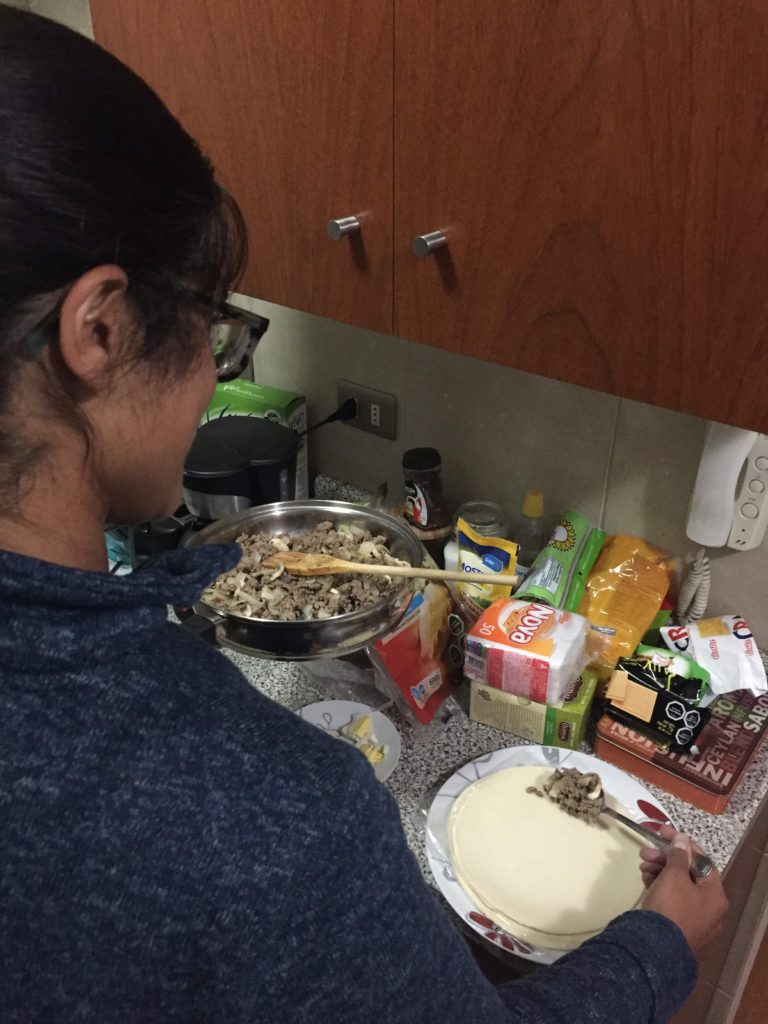
B
Busy Vega Market: A trip to Santiago must include a trip to La Vega Central Market! This massive, noisy, bustling market has stalls selling primarily fresh fruit and vegetables, usually by the kilo. It is especially busy in the mornings and on the weekends. Even if you do not need anything, it is worth visiting simply to witness the craziness of it all!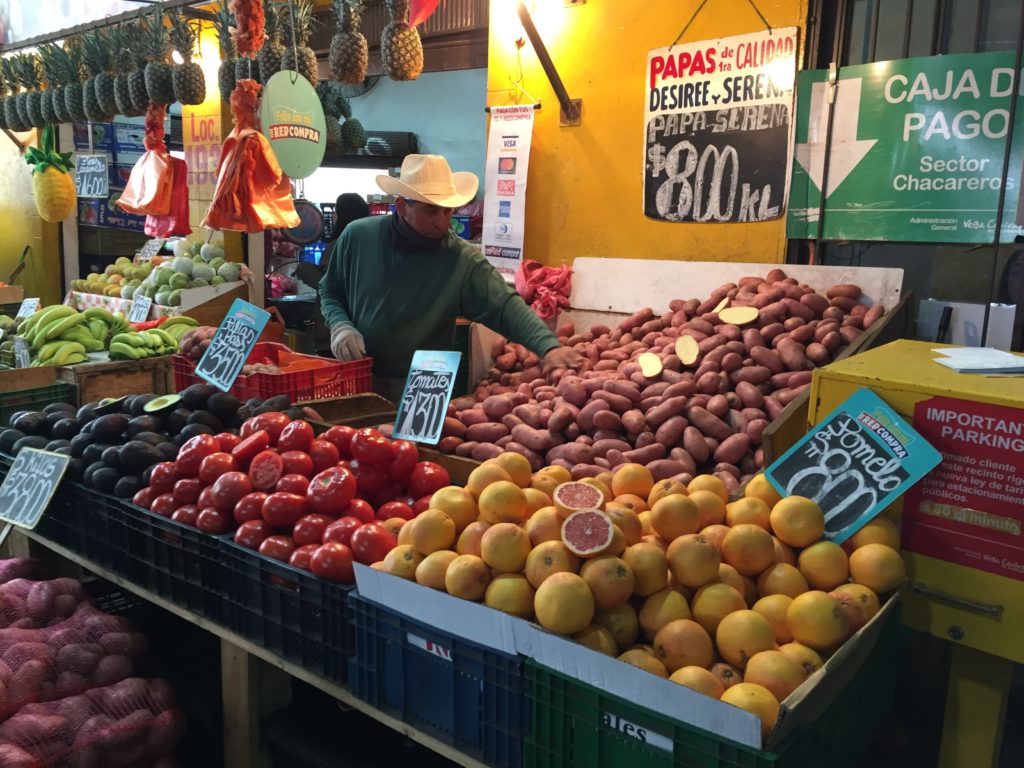
C
Costanera Center: A landmark of the city, this complex contains the tallest building in Latin and South America at 300 metres (980 ft) in height. It also has a six floor shopping mall, three more skyscrapers, two hotels and an office building. As it was a cloudy day when we visited, we decided not to go to the top. It is also extremely expensive considering we already experienced great views of the city from atop Santa Lucia Hill and San Cristobal Hill.
D
Desert Atacama: A quick two hour flight will take you to the Atacama desert in Northern Chile. Check out our “Self Driving the Atacama Desert” for everything you need to know about this amazing destination!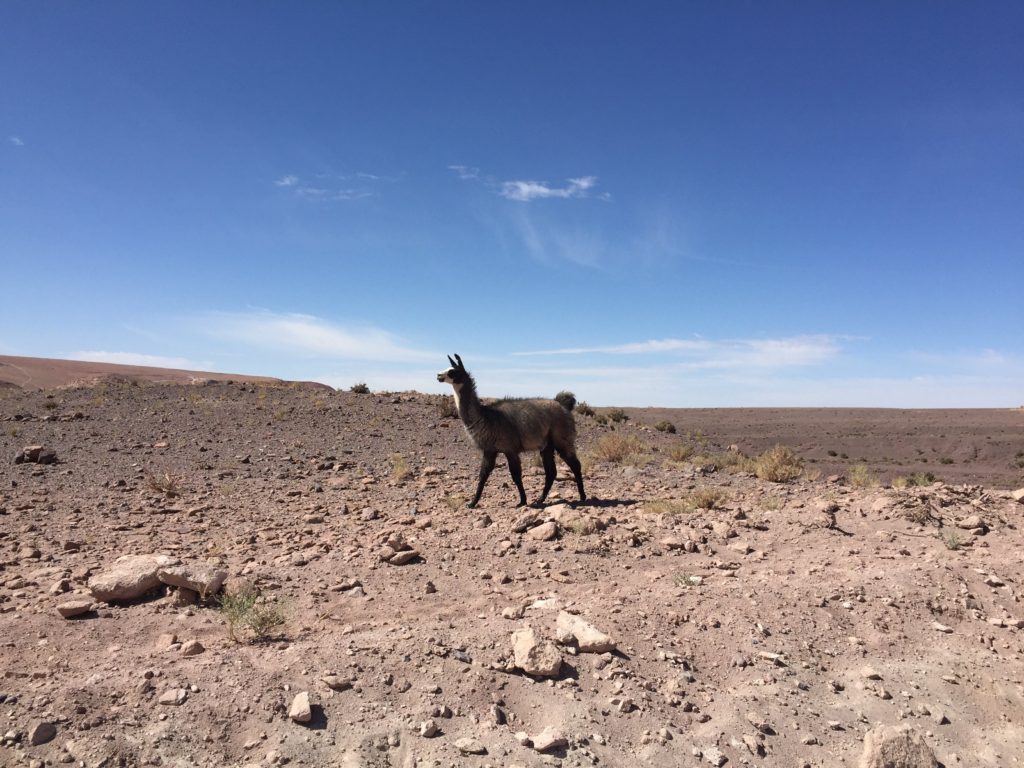
E
Easter Island: Santiago is the only place in the western hemisphere that flies to Easter Island. If it’s in your budget, a trip to this majestic island should not be missed. It was one of the highlights of our travels thus far! Check out our “Complete Guide To Easter Island” for a comprehensive guide to everything you need to know!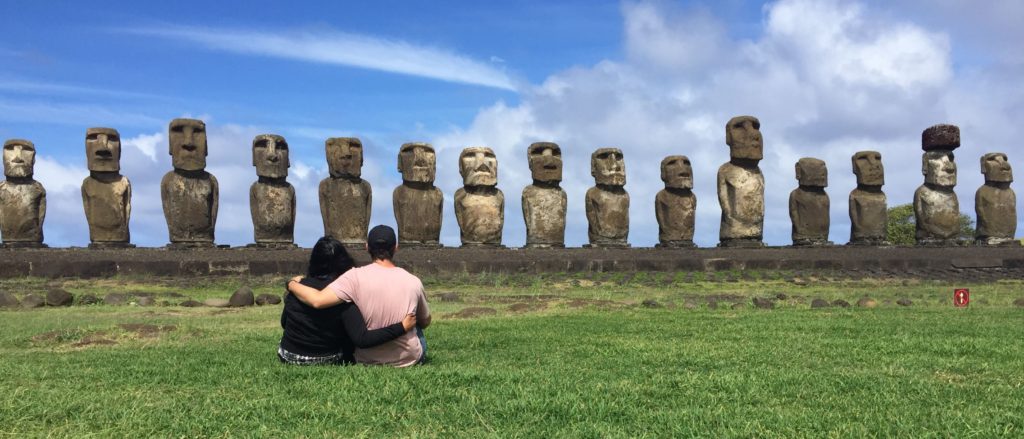
F
Fuente Alemana: This restaurant with two locations in the city and made famous by a visit from Anthony Bourdain serves a delicious sandwich so big that it needs to be enjoyed with a fork and knife! The signature sandwich is the lomito completo, which is a pork sandwich with palto (avocado), mayonnaise, queso (cheese), and chucrut (sauerkraut). I enjoyed one with a local Kuntsmann beer and was full for the rest of the day!
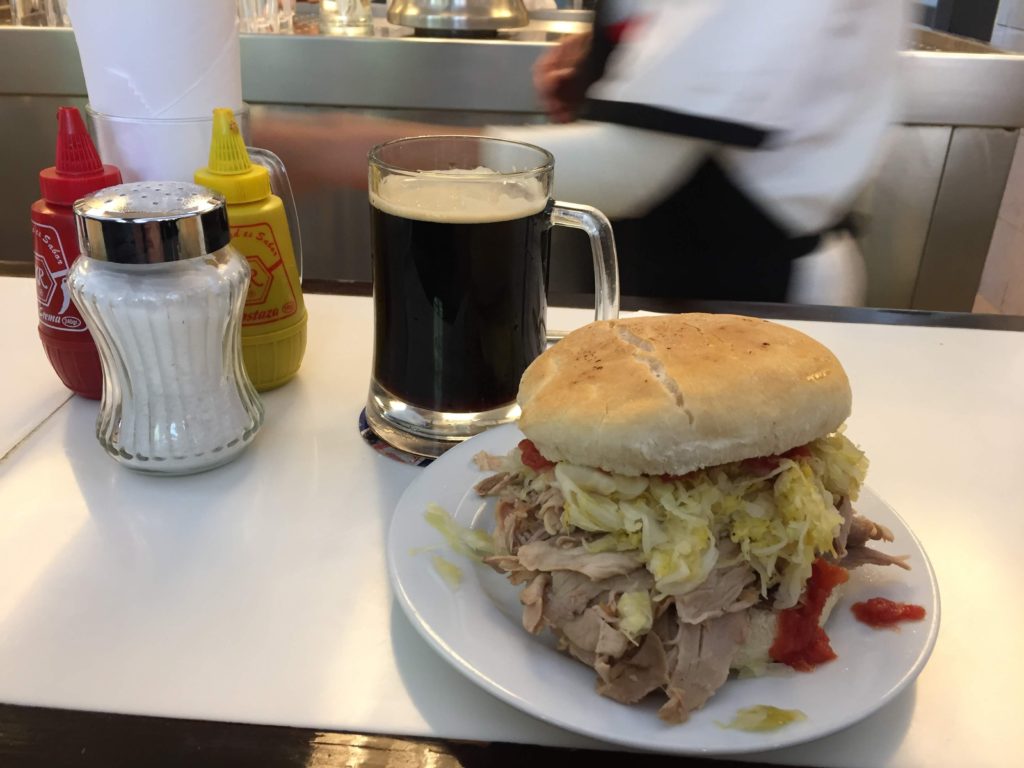
G
Grocery store lines: For whatever reason, every time we visited a grocery store in Santiago (which was many), the lineups were always huge! We usually waited behind a minimum of 5 customers before checking out! We always tried to bring our own bag as well, as stores only provide patrons with two plastic bags. In addition, some cashiers take issue if you try to bag your own groceries.
H
Hallulla bread: We do not usually eat a lot of bread, but we became addicted to hallulla bread in Chile! Hallulla is flat and round bread that is perfect for sandwiches or to enjoy with eggs for breakfast! It is best enjoyed warm and is also pretty affordable!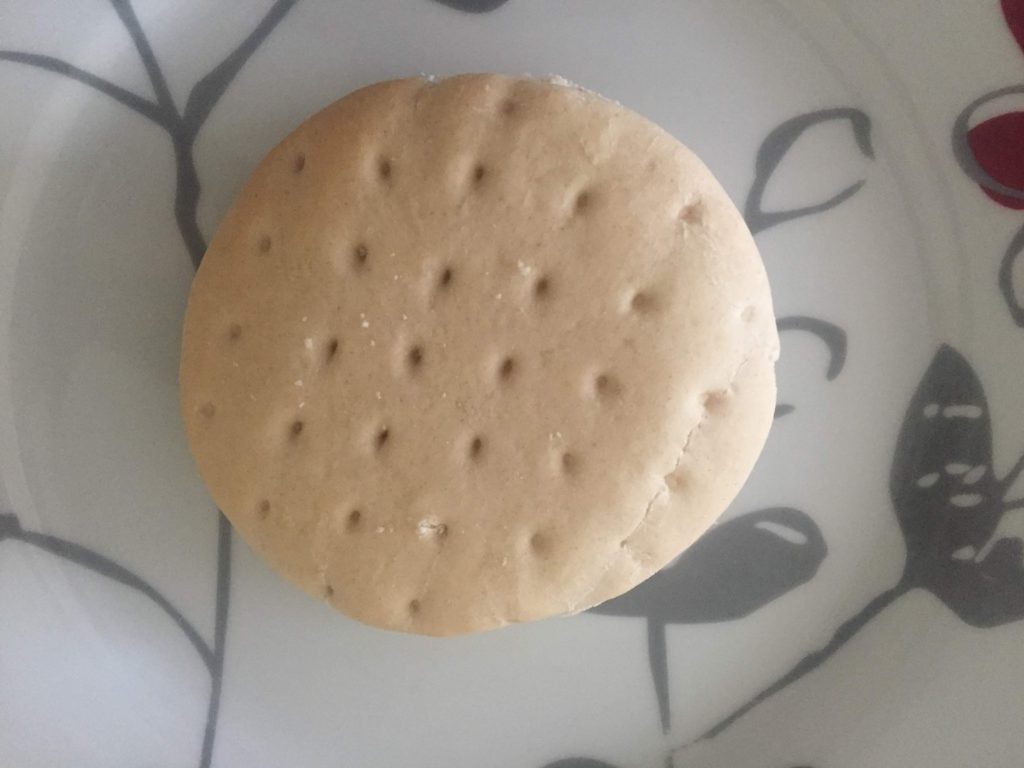
I
Ice Cream Emporio La Rosa: Among the best ice cream we have ever had, there are Emporio La Rosa locations all over Santiago that serve unique flavours such as chocolate orange or rose. The price tag is a little high for ice cream, but on a hot day after walking around the city it’s worth it!
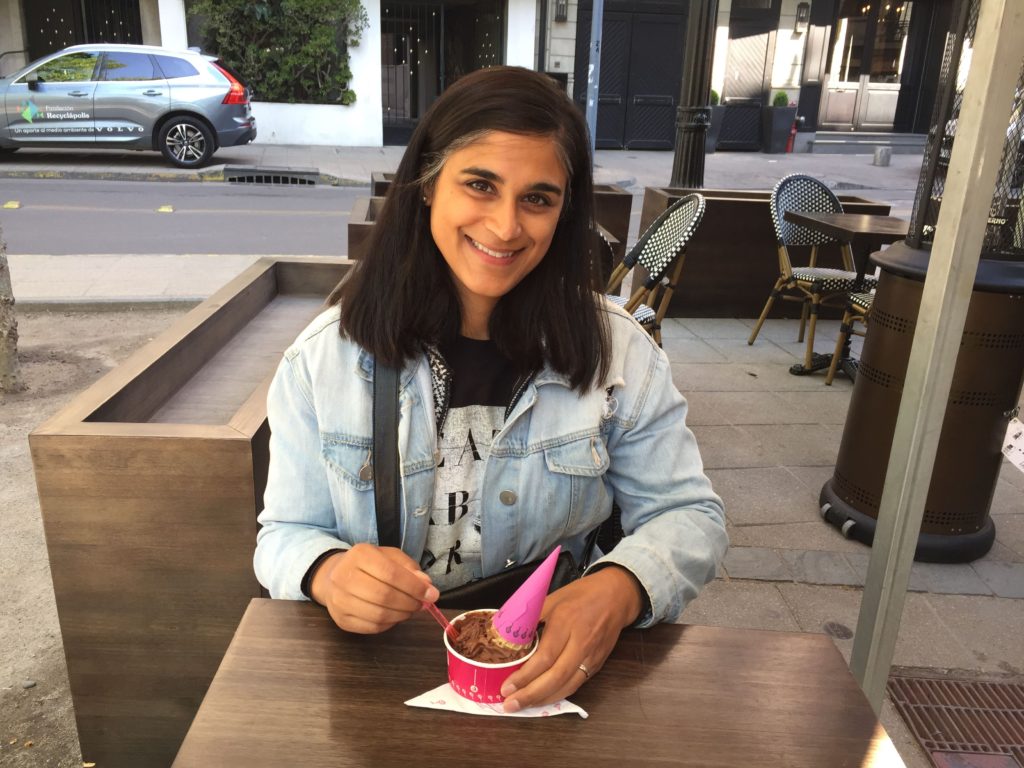
J
Java Problems: People in Santiago typically drink tea more often than coffee – and if you do find coffee it’s Nescafe instant coffee! To find affordable coffee to make at home can be a challenge. Our local grocery store only carried one or two options for regular ground coffee. Also, the typical price for a decent cup of coffee at a café will run you approximately $2,000 pesos (almost $4 CAD).
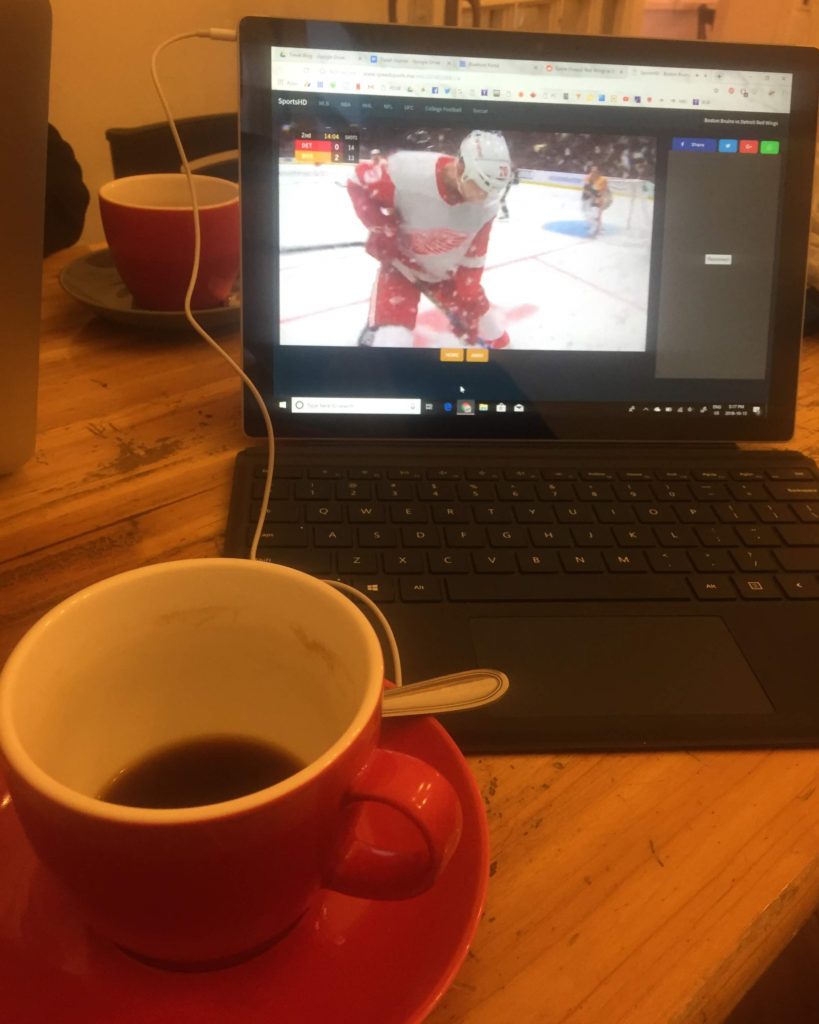
K
Krossbar: A local craft brewhouse in the happening Bellavista neighbourhood, this establishment is a great place to enjoy good beer with friends. With six beers on tap to sample as a flight or in pints, there is certainly something to satisfy all taste buds. There is also a selection of bottled beer from Chile, Belgium, and the United States. If beer isn’t your thing, the menu has plenty of other options such as wine, beer cocktails, and mixed drinks. Although Krossbar reminded us of a North American brewery, it was nice to have some good craft beer brewed by a German brewmaster! The prices are similar to what you would pay in North America.
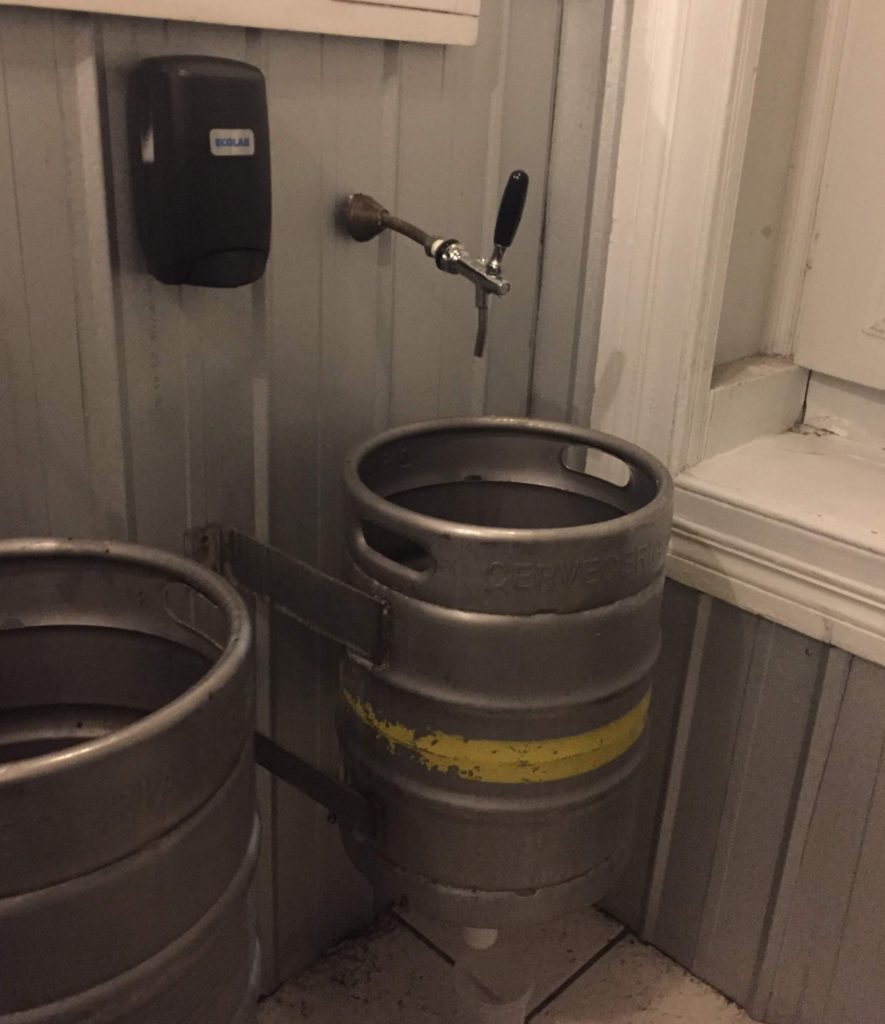
L
La Moneda: Translated to “The Palace of the Mint”, this building holds the president of Chile’s seat. Every two days (odd-numbered days in odd-numbered months, even-numbered days in even-numbered months), there is a traditional changing of the guard ceremony. The 30 minute spectacle is impressive with marching bands and soldiers on horses! Downstairs is the Centro Cultural de la Moneda, which regularly has new exhibits. When we visited, there was an exhibit all about whales! It is a great museum to check out, and it is free before 12:00 p.m.
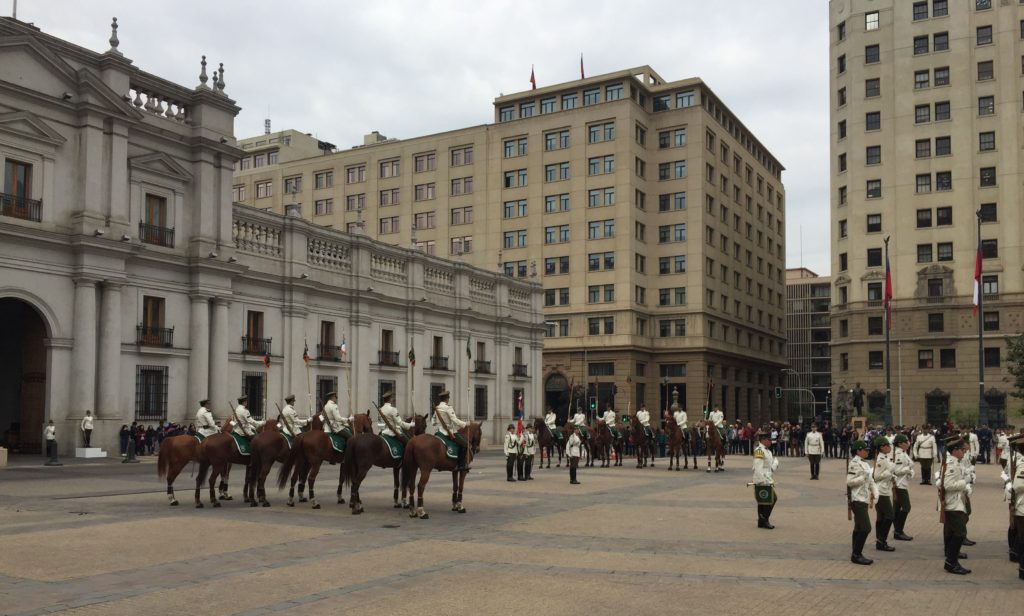
M
Museum of Memory and Human Rights: This is an excellent museum that recognizes victims of human right violations in Chile from 1973-1990. If you don’t speak Spanish, we recommend that you get the English audio guide to get the most out of your experience. This museum, along with most of the publicly-funded museums in Chile, is free!
N
Neighbourhoods: Santiago has an array of great neighbourhoods to explore! A few of our favourite neighbourhoods (barrios) include Barrio Italia, which is a hip, artsy area with great restaurants and cafes. I got my haircut at an awesomely hipster barbershop (Barberia Chop and Rock) in that ‘hood. Barrio Lastarria is a great cultural area with museums, theatres and good restaurants (though a little pricey). Barrio Bellavista is known as a bohemian area of Santiago, with galleries, boutiques and nightlife. The famous late Chilean poet/politician, Pablo Neruda, was living there and his house is now a private museum called La Chascona. Centro Historico is a great place for history, with the Plaza de Armas, cathedral, and the National Historical Museum located in this area. Finally, Barrio Bellas Artes is an area to take in some culture at the fine arts museum or to climb up Santa Lucia Hill.
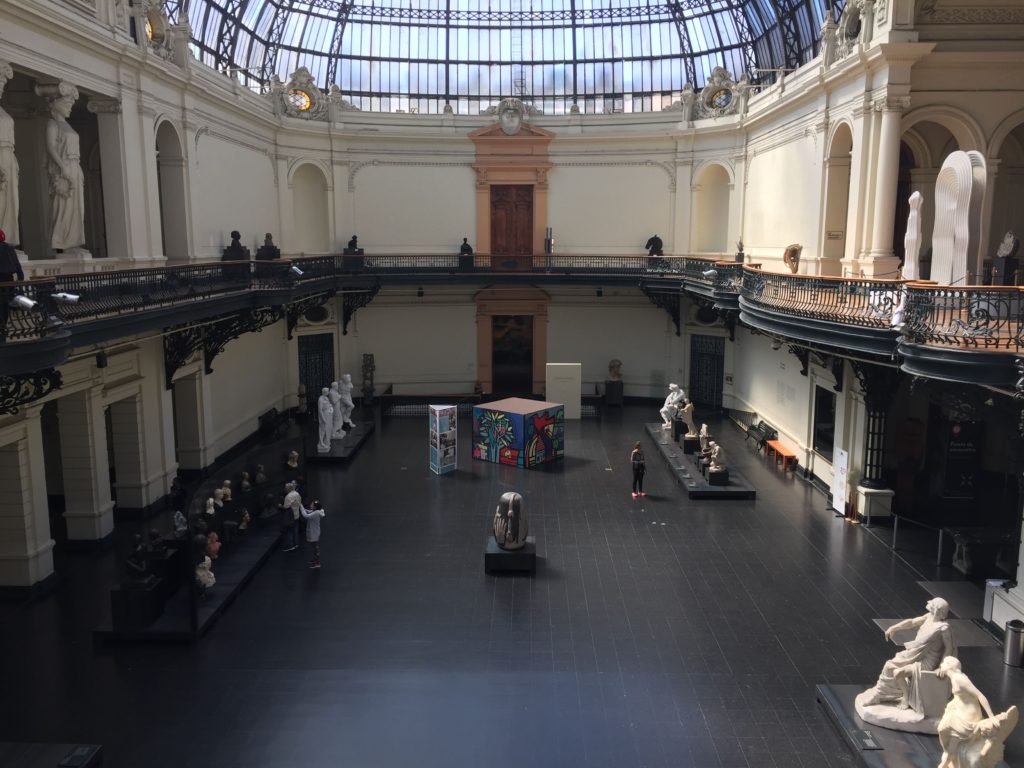
O
Odors: For some reason, smoking is still incredibly prevalent in Santiago, more so than any other South American country we have visited. At times, it became unbearable for us to walk through a busy downtown neighbourhood because the smoke was constantly being blown in our faces!
P
Plaza de Armas: This is the main square in Santiago. Surrounding the square are some beautiful colonial buildings such as the Metropolitan Cathedral of Santiago and the Central Post Office Building. It is a great place to people watch, as it is always bustling with locals and tourists. The free walking tour begins in Plaza de Armas everyday at 10:00am and 3:00pm.
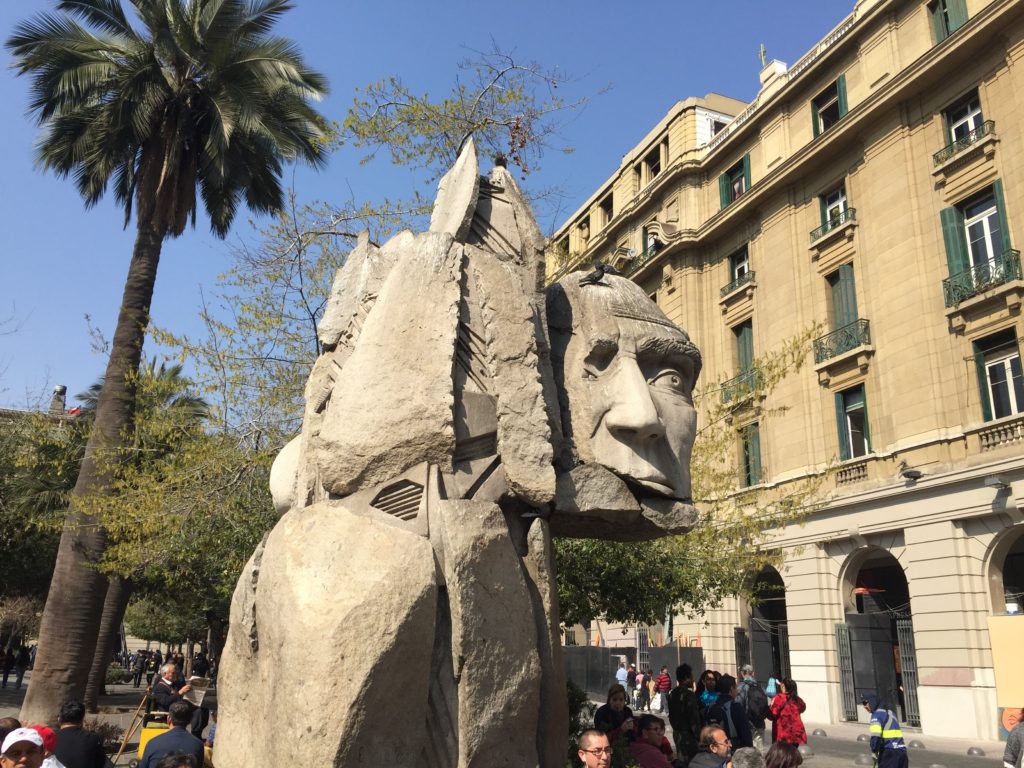
Q
Quality Food Standards: A great initiative by the Chilean health ministry to combat obesity, all packaged foods high in sugar, calories, sodium or saturated fat have warning labels on them. We certainly felt a little bit more guilty than usual when we bought chocolate, crackers, or chips!
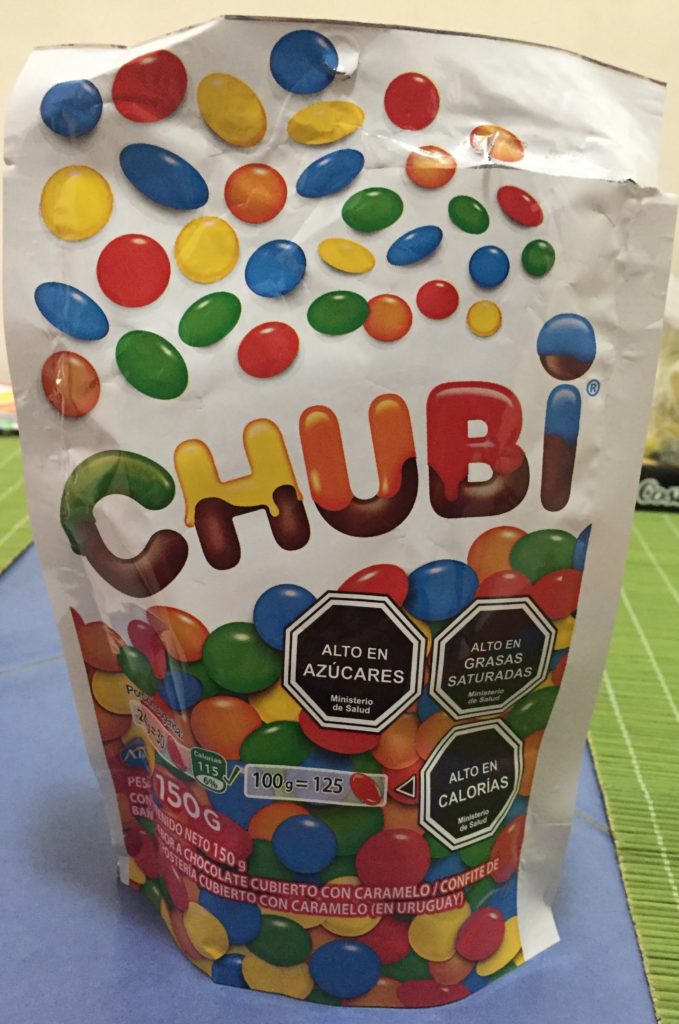
R
Religious San Cristobal Hill: Atop San Cristobal Hill is a giant 22m statue of the Virgin Mary. The hill is a great place to visit to get a 360 degree panoramic view of the city from 850m in elevation. Although there is a funicular and a cable car that can take you to the top, taking the 45 minute hike on foot is much more rewarding.

S
Santa Lucia Hill: Located in the centre of Santiago, Santa Lucia Hill (Cerro Santa Lucia) is another excellent place to visit to get a bird’s eye view of the city. It is a beautiful park with various paths, gardens and fountains as well as old forts. It is best to visit on a clear day for the best views!
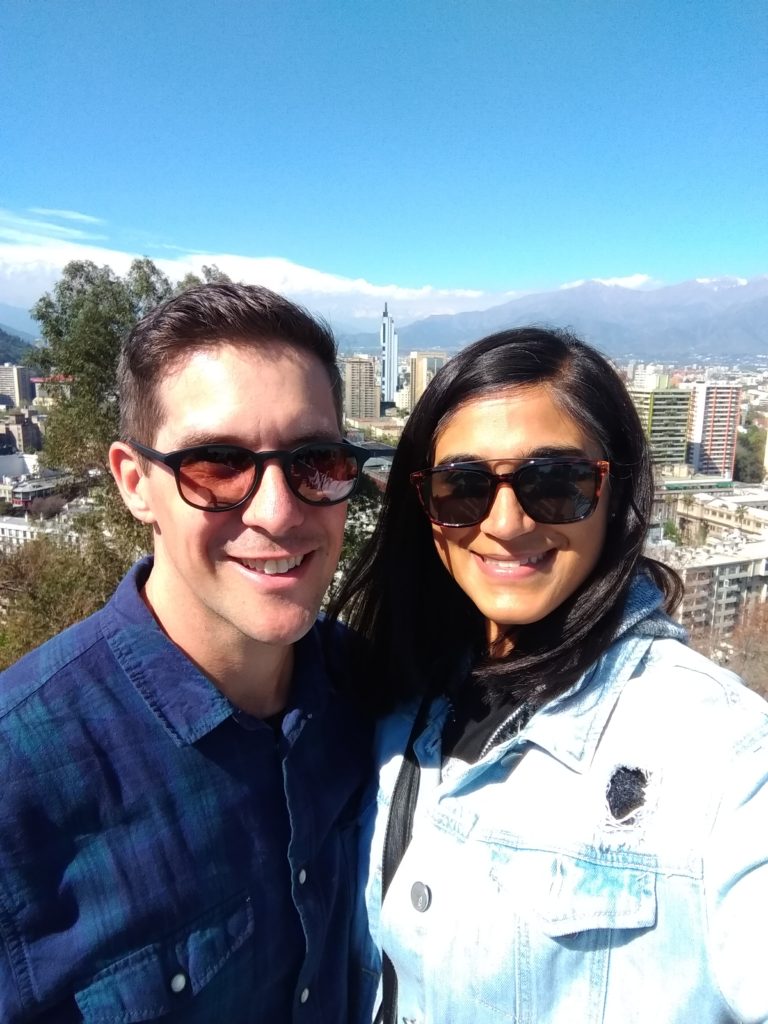
T
Travel Papers: Upon arrival to the country, we were provided an immigration form from the police (PDI) that looks no different than a grocery store receipt. What we later discovered was that every hotel requires this form for check in and it must be returned to the PDI in order to leave the country. Don’t lose it!
U
Unique Café Con Piernas (Café With Legs): As seemingly contradictory to the relatively conservative Chile, the business district has many cafés that serve mediocre coffee or tea from scantily clothed baristas in mini skirts. At 10am, most of these cafés will be full of local businessmen taking coffee break. Often the café’s counter has glass on the front so the view of baristas’ legs are visible. There are popular locations with storefront windows and patios on main pedestrian streets. However, we’ve been told that there are also more seedy versions of these cafés in more discreet basement plazas as well.
V
Valparaiso Day Trip: A quick hour and a half bus ride from Santiago will bring you to the beautiful port town of Valparaiso. This hilly city full of awesome street art on a curvy maze of streets is a photographer’s dream. They say the people of Valparaiso have amazing legs due to all the stairs and hills! We thoroughly enjoyed exploring the streets, taking a walking tour, eating some fresh fish and taking a sunset boat ride in the harbour!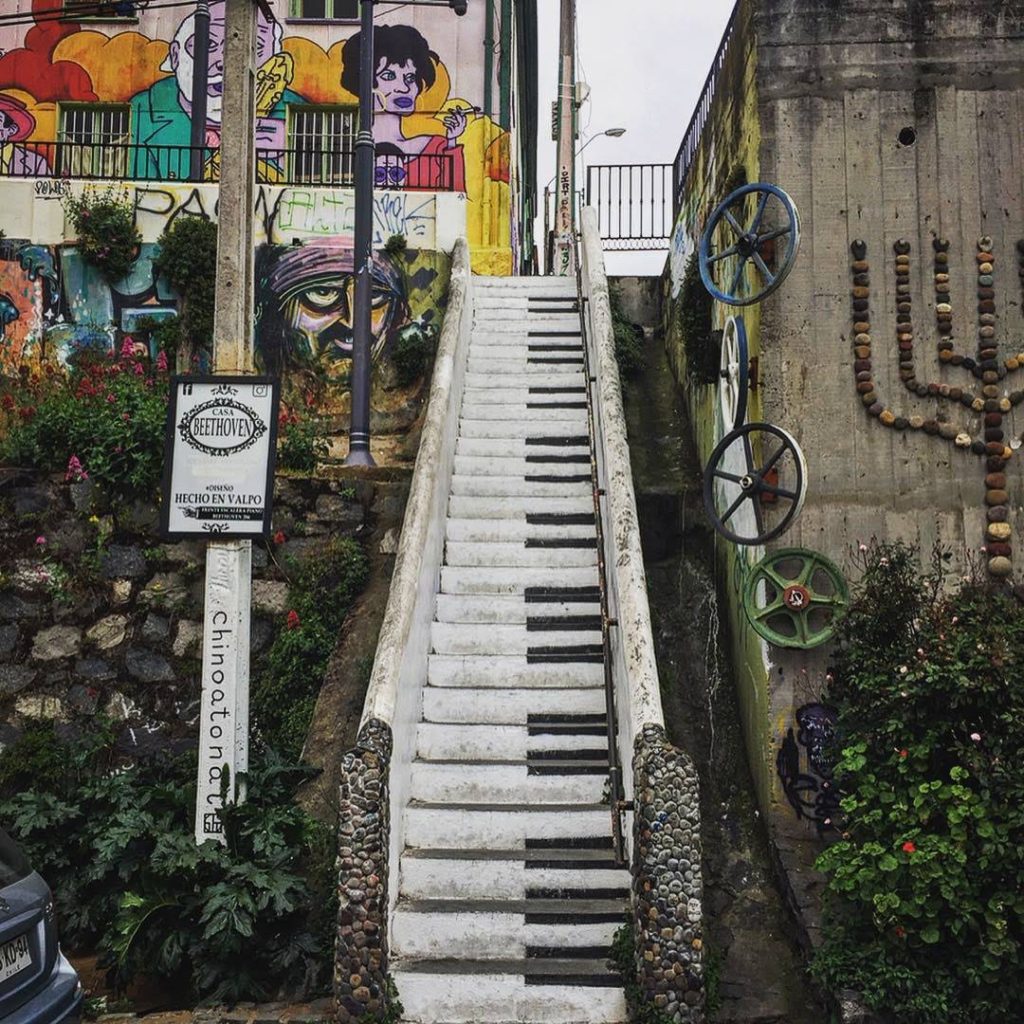
W
Wineries: Chile has many different wine regions. The closest to Santiago include the Casablanca wine region and the Maipu wine region. Casablanca is located approximately one hour west of the city, on the way to Valparaiso. The Maipu region is located in the city’s outskirts and can even be visited by public transit. We took a tour of Viña Cousiño Macul on our last day in Santiago, which entailed a tour of the vineyard, fermenting room, wine cellar and sampling of four of the Antiguas Reservas wines. We sampled a 2016 Chardonnay, 2014 Cabernet Sauvignon, a Merlot, and a 2014 Syrah. The tour cost $28,000 CLP for two of us.
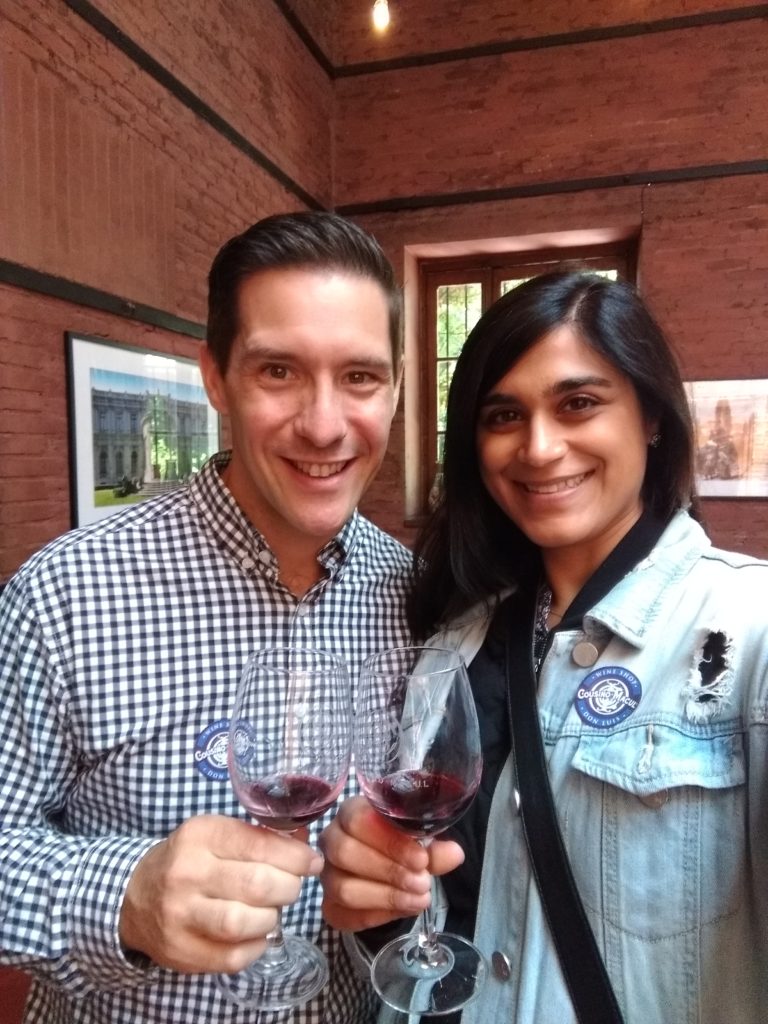
X
eXpensive costs: Ok. I cheated a little on the X, but what starts with x anyway? After travelling through Colombia and Peru, it was a bit of a sticker shock when we saw the prices of everyday items in Chile. It was difficult to adjust to paying Canadian prices for our day-to-day expenses when we were used to paying half of what we would pay at home. A big exception to this is wine, which is extremely affordable in Chile!
Y
Yummy (and/or yucky) terremoto cocktail: The Chilean cocktail known as a terremoto (“earthquake”) is made with white pipeño wine, pineapple ice cream and grenadine. The quality of this drink varies, as we had two completely different experiences trying it. The first time we tried the terremoto, it was delicious, like a sweet dessert. The second time was awful. Although we did not go to “La Piojera” (a popular local Santiago bar) we heard it is a good place to try this drink.
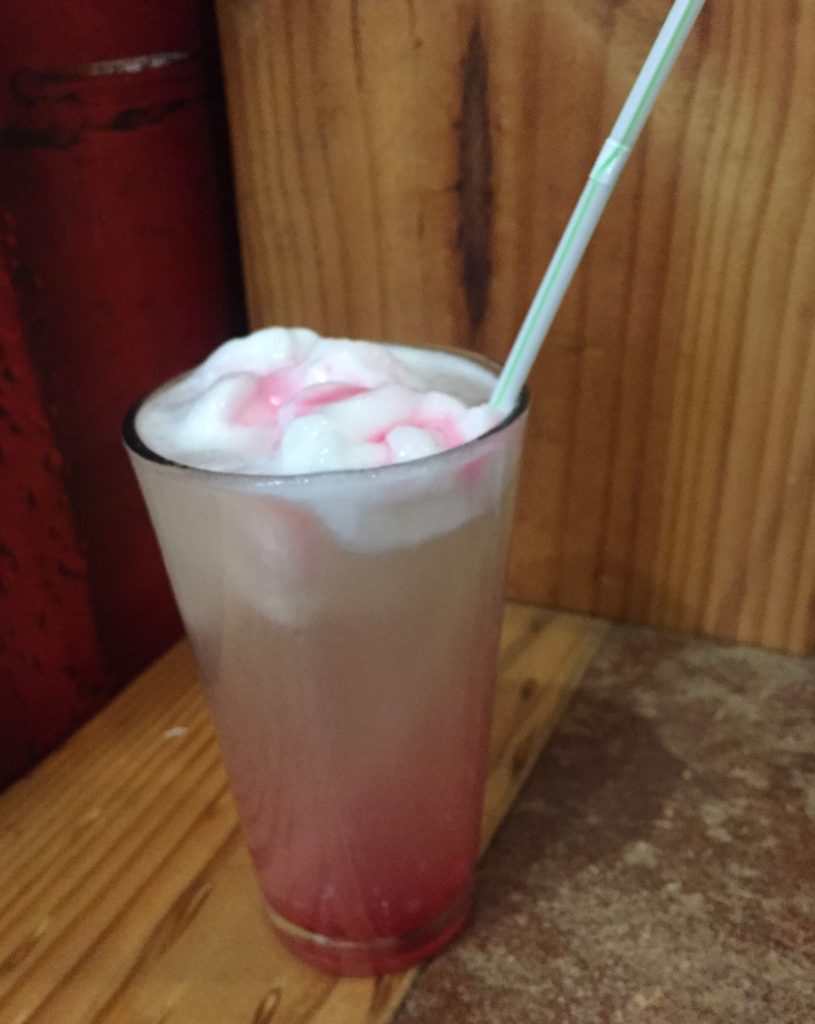
Z
‘Za: We had some of the most delicious pizza we’ve ever tried at La Argentina Pizzeria in Barrio Italia. We ordered a mozzarella, pineapple and red pepper pizza, which provided us with leftovers for the next night’s dinner as well. We highly recommend visiting this pizzeria. It’s almost a good thing that we tried this for the first time near the end of our trip! Otherwise, we would have likely eaten too much of this pizza and would need to buy a bigger belt!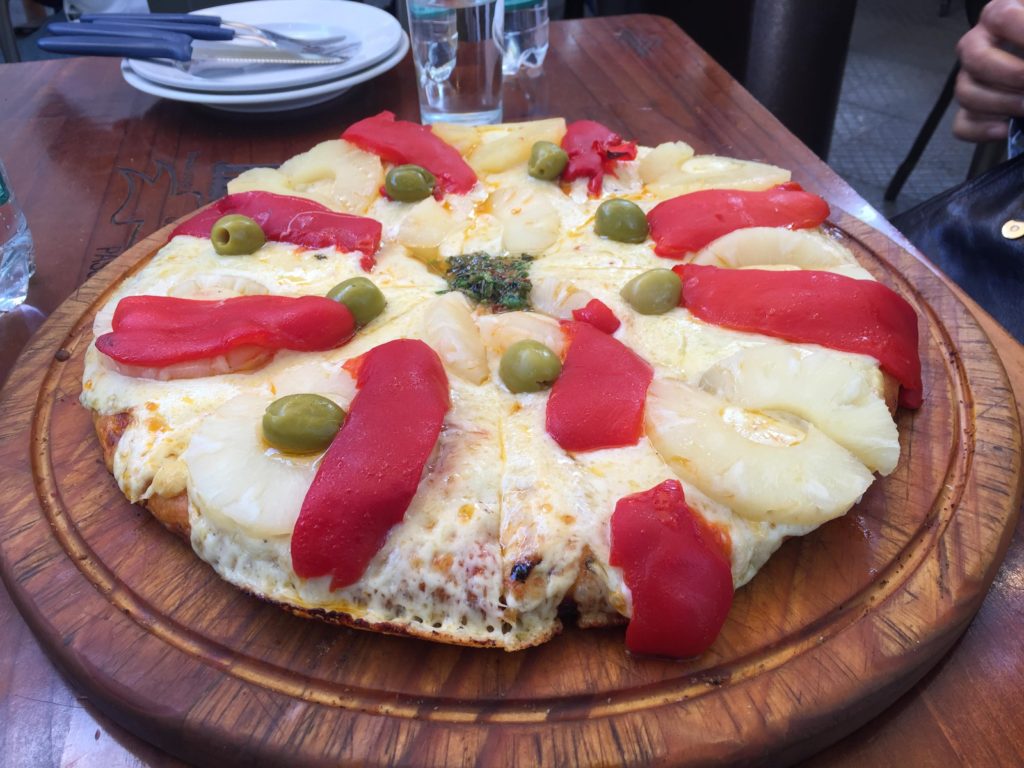
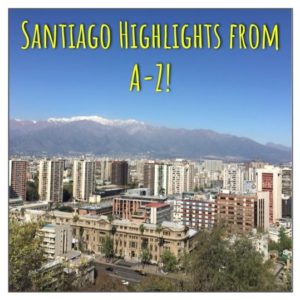
Disclosure: Please note that this site may contain affiliate links to products. We may receive a small commission for purchases made through these links at no extra cost to you.
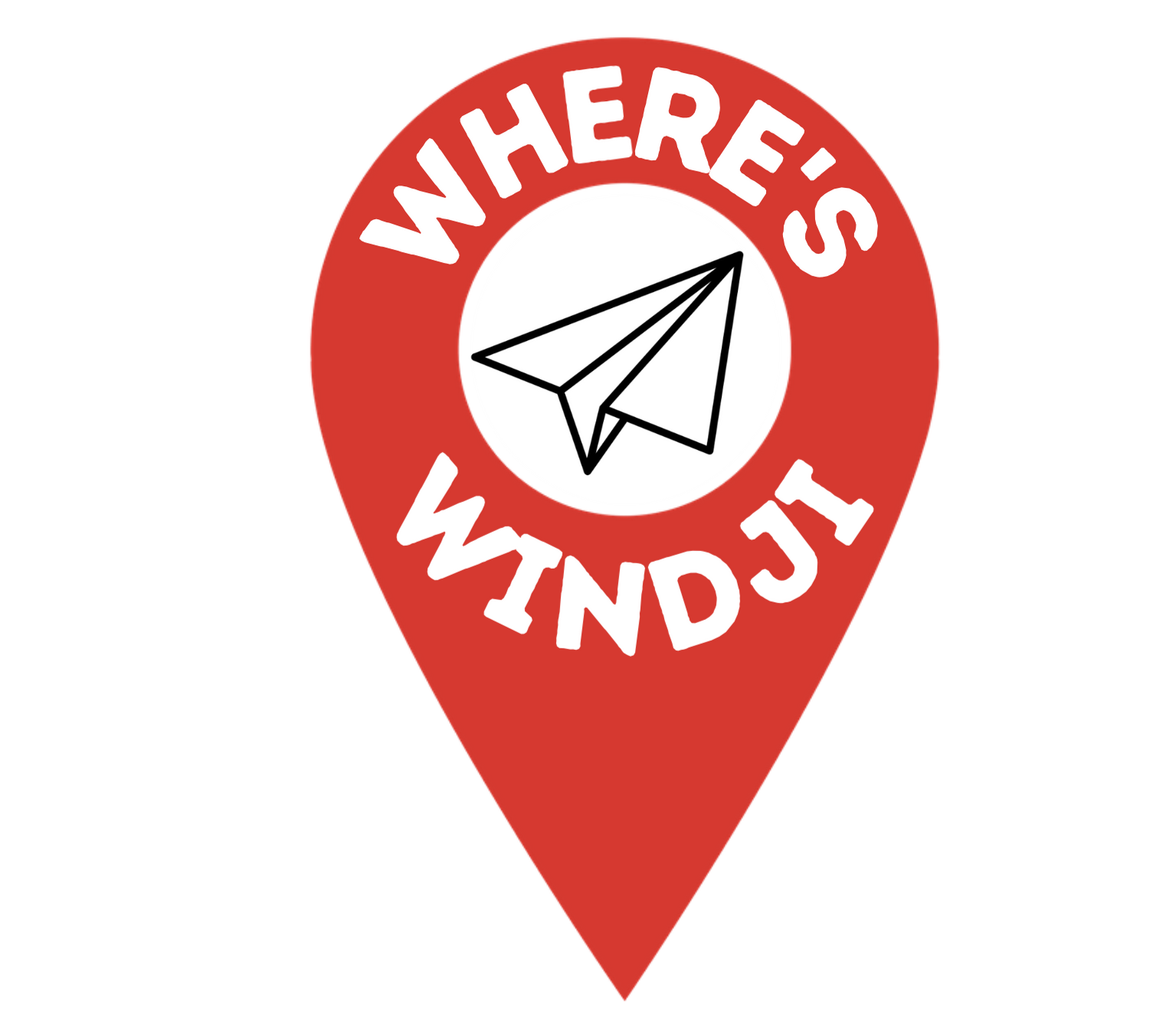
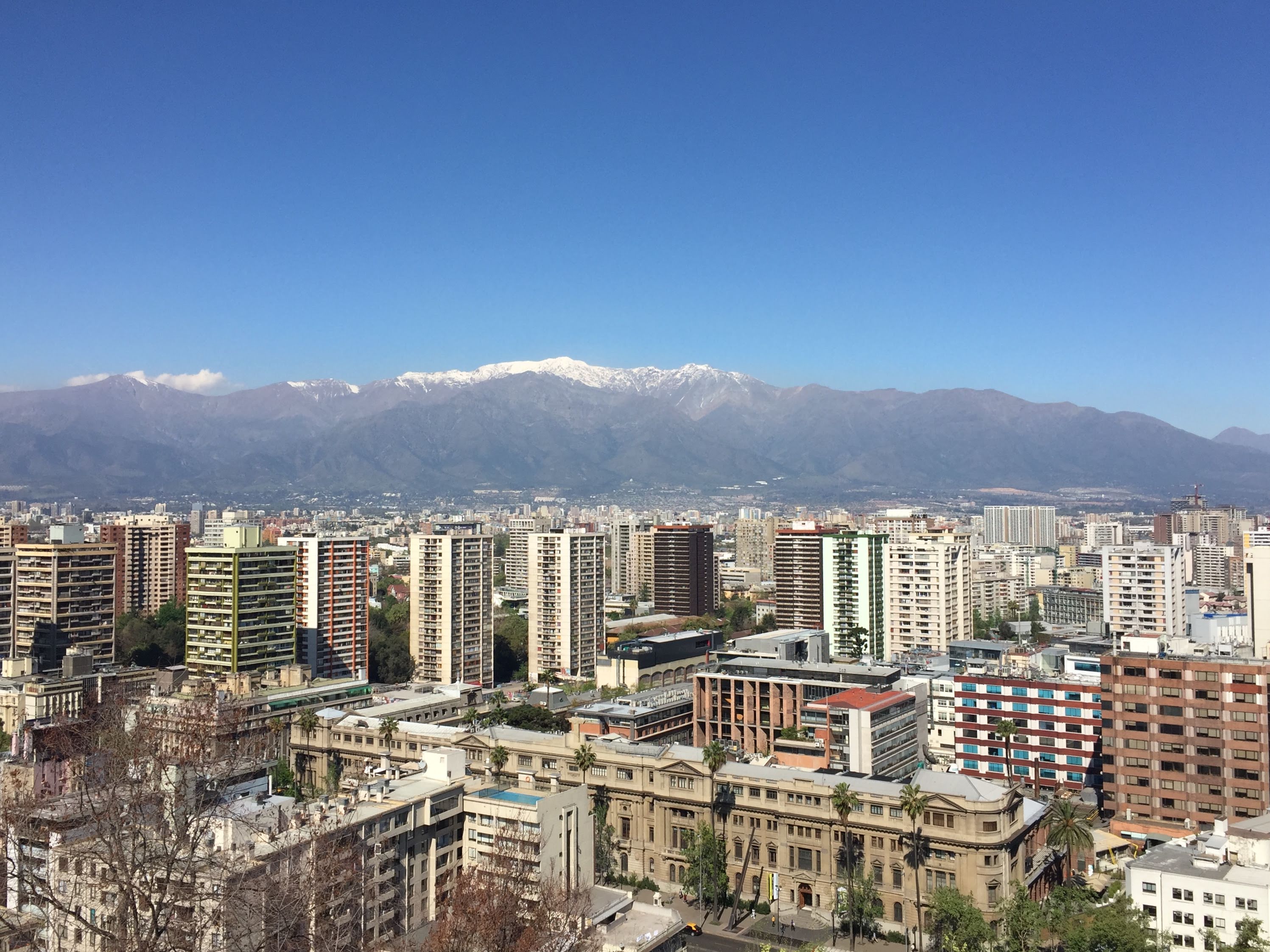
Liked how you have used the alphabet to write your blog. Well Done. Enjoying reading and seeing through your blog..